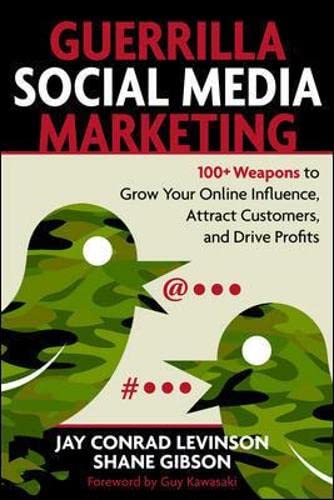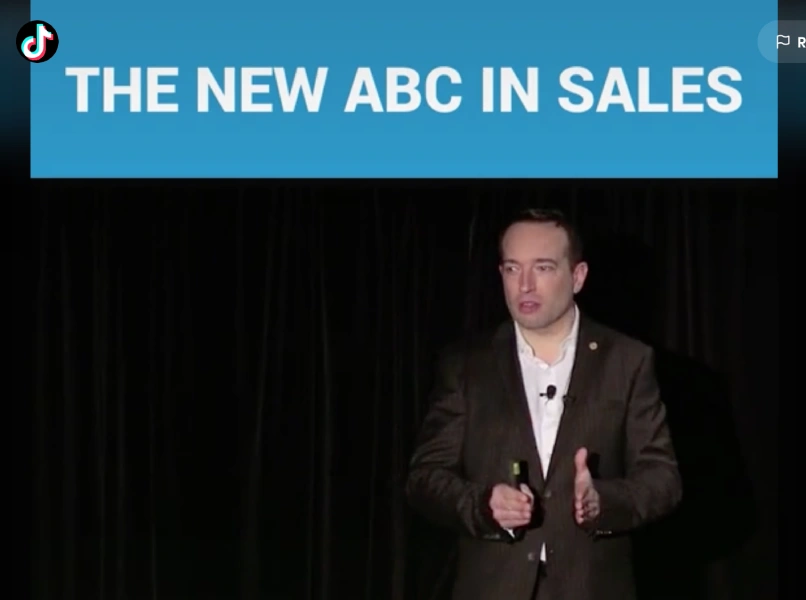Sales Podcast – 12 Non-Negotiable Sales Truths
Podcast: Play in new window | Download | Embed
Subscribe: RSS
This sales podcast is focused on 12 Non-Negotiable Sales Truths. As a sales trainer and keynote speaker I come across people often who want to short-cut and negotiate the price of sales success. This podcast digs into some of the core truths we have to live with and work within. Following is the podcast transcript and video:
(Video) Keynote Speaker Shane Gibson on Non-Negotiable Sales Truths
[Begin sales podcast transcript]
Today, I want to talk about twelve non-negotiable sales truths. There are also twelve not-so-popular sales truths. When we discuss sales truths, one of the things we consider is our desire for success and what it means to be a successful sales professional. As sales professionals and sales leaders, we’re always seeking an advantage, trying to find a shortcut, and aiming to reduce the time it takes to move from point A to point B. However, in many instances, there are core sales truths and principles that can’t be sidestepped. They’re a reality if we aim for long-term success in sales. I will delve into these in today’s podcast. This is available on YouTube @Shane Gibson. Clips/reels will also be shared on Shane Gibson’s Instagram (@ShaneGibson), as well as @ShaneGibsonLive on TikTok. You can of listen to Shane Gibson’s Sales Podcast on platforms ranging from Spotify to Apple Podcasts and many others.
(Please note that Truth #9 was omitted in the podcast and added to the text below)
Let’s dive into these twelve non-negotiable sales truths.
Sales Truth #1 – You can never be too busy to prospect and work your funnel.
It’s crucial to understand that you can never be too occupied to prospect and manage your funnel. Prospecting is an investment for our future that we must consistently make. Often, I’ve observed (and experienced in my business) professionals getting overwhelmed with inbound tasks, client service, meetings, administrative duties, and other work commitments. We sometimes forget that prospecting is our lifeline. Part of this oversight is because results from prospecting aren’t immediate, especially with sales cycles ranging from three weeks to six months. However, top performers who secure deals regularly were consistently prospecting and maintaining their funnel weeks or even months prior. It’s essential to set aside dedicated time for prospecting and funnel management.
Sales Truth #2 – An inquiry is not necessarily a lead, regardless of their “sentiment.”
An inquiry doesn’t always equate to a lead, no matter the sentiment behind it. It’s easy to get overly enthusiastic about someone filling out a form. Still, the debate between sales and marketing teams regarding what constitutes a marketing-qualified or sales-qualified lead is ongoing. Merely because someone shows interest or belongs to a targeted company doesn’t mean they’re a genuine lead. Various other factors determine an ideal prospect. Therefore, before adding someone to the funnel, ensure they meet the qualification criteria. Sometimes, an immediately available person isn’t the right fit. By effectively filtering these inquiries, we can focus our energies on filling the funnel with the right prospects.
Sales Truth #3 – Discovery is much more than just asking questions.
While client needs analysis and discovery processes emphasize asking pertinent questions, there’s more to it. Some professionals mechanically go through the process: asking a set of questions, nodding, jotting down notes, understanding core pain points, and then drafting a proposal. However, when there’s no callback from the potential client, we must ask ourselves if we established trust and rapport during the meeting. Effective listening, responsive interaction, deeper probing when necessary, and even assertiveness can build trust and credibility. An effective discovery call or client needs analysis involves discerning when to listen, interject, lead, or follow. Ultimately, our aim during discovery is twofold: to understand the client’s deepest business motivations and to establish genuine credibility, rapport, and trust. This requires more than rote learning a script. It calls for empathy, curiosity, and confidence in our abilities to conduct the discovery process efficiently.
Sales Truth #4 – Conversations outside of the sales and buying process are where the magic happens.
Conversations outside of the sales and buying process often yield significant results. While I emphasized the importance of questions during discovery, much of the progress in fostering relationships with clients often takes place outside official meetings. It’s the impromptu conversations after providing a solution, the moments between formal meetings, the chance encounters at social events, and other unexpected engagements that make a real difference. These interactions solidify your role as a trusted advisor and partner, establishing deeper value, credibility, and connection. Genuine relationships often blossom outside the confines of a structured sales or buying process, making it crucial to invest time in understanding both the client and their organization.
Sales Truth #5 – You rarely are talking to “the” decision maker.
More often than not, you aren’t interacting with just one decision maker but multiple buying influencers. This is backed by Gartner studies which, over the years, indicate a steady increase in the number of individuals influencing B2B decisions. A few years back, this number averaged around five and a half, but today it’s closer to seven. The notion that connecting with a single “right person” or “champion” is sufficient is misleading. To truly grasp a client’s needs and make a sale, it’s essential to identify, understand, and engage with all the influential stakeholders. This involves time, trust-building, and navigating gatekeepers. Moreover, once a network is established, it’s imperative to consistently nurture all these relationships to ensure not only acquisition but also the retention and growth of key accounts.
Sales Truth #6 – You don’t get good sales results by scaling the mediocre.
Achieving substantial sales results isn’t about magnifying mediocre efforts. This principle is glaringly evident in the current scenario, especially on platforms like LinkedIn, where many are resorting to automation and mass messaging. Sending generic messages to large numbers with a minuscule response rate isn’t an effective strategy. While such an approach may yield some positive replies, it simultaneously alienates a vast majority who feel the outreach lacks personalization and relevance. The key isn’t necessarily to increase efforts exponentially. While a certain level of commitment and discipline is crucial, refining one’s approach is even more vital. Resorting to a strategy that relies on bombarding the marketplace in the hopes of securing a handful of positive outcomes is short-sighted and harms the brand reputation in the long run.
Sales Truth #7 – Practice does not make perfect; repeating and training in what works does.
Practice does not make perfect. I learned this as a martial arts lesson from my teacher, Fred Shadian, many years ago. Practice doesn’t make perfect; it’s perfect practice that makes perfect. If I repeatedly practice the wrong thing, use a cheap imitation of a good sales approach, or recite a mediocre script, I won’t improve. Instead, I’ll become more deeply ingrained in the wrong method. What’s truly important is that repeating and training in proven methods helps us improve. This entails investing in best practices, sharing them, seeking external benchmarks, and adopting processes that have been shown to work. It isn’t merely about repetition or endlessly making calls hoping to improve. There’s a more effective approach that prevents us from forming bad habits or enduring terrible sales experiences.
Sales Truth #8 – They’re not your leads, customers, or territory.
This point is crucial. From a managerial perspective, I’m somewhat irked when I hear salespeople claim “my leads,” “my customer,” or “my territory,” suggesting that they don’t need to share information because it’s all about them. In reality, those leads, customers, and territories aren’t theirs. If you’re employed by a company to work in that market and are compensated with a salary and commission, those leads and customers belong to the company’s CEO or its shareholders. Your role is to cultivate opportunities for the organization. I mention this because salespeople often become possessive, which hinders teamwork. This possessiveness can cause them to miss broader opportunities to utilize the entire organization to serve clients. It’s essential to think as a team player, focusing on providing the best solutions and retaining clients for the long term, rather than as a lone wolf.
Sales Truth #9 – Sales isn’t fair; opportunities are given to those that convert.
Sales isn’t fair. Within sales organizations that have inbound leads, a common comparison occurs among the sales team. Salespeople tend to “sniff around,” trying to discern if their colleagues receive more or perhaps larger account leads than they do. The prevailing notion is that every salesperson should get an equal distribution of leads or lucrative opportunities. However, in practice, sales organizations often adjust their lead distribution, directing more leads to those who have proven to convert them effectively. For example, if I spend $100 on a lead, and one salesperson can generate $100,000 from 100 leads, while another only produces $20,000, it’s clear that distributing the leads equally isn’t the best strategy. Sales professionals should realize that success isn’t just about accumulating more leads, but rather maximizing the potential of each lead they receive. Often, management observes and prioritizes lead distribution based on the demonstrated ability to convert. Any sales manager not allocating the most promising opportunities to the best converters is effectively leaving money on the table. It may not seem fair, but this is the economic reality of sales.
Sales Truth #10 – Expertise beats tenure in sales.
In sales, expertise holds more weight than sheer tenure. Duration alone doesn’t ensure top performance. My father once pointed out an intriguing perspective regarding someone with “20 years of sales experience”. He asked if the individual truly had two decades of varied experience or just one year’s experience repeated 20 times. Had this person genuinely evolved and learned over time? This reminds me of an experience with a high-end car dealership, where a newcomer to sales, previously in marketing, outperformed many seasoned professionals. This person was eager to learn, thoroughly studied the products and market, and was receptive to innovative sales techniques. Merely having years of experience under one’s belt doesn’t guarantee success. As the marketplace and competition evolve, it’s imperative to continually hone one’s expertise.
Sales Truth #11 – Reaching your sales goals will be more challenging than anticipated; expand your understanding of effort.
Attaining your sales goals is likely harder than initially expected. I’ve found this in my own endeavors, such as when I embarked on writing a book. I tend to form a mental picture of the effort it would take to complete a project within a given timeframe. Yet, based on my past experiences, I’ve often underestimated the time, effort, obstacles, and energy involved. Thinking about my major clients over the past two years, I’ve realized that the effort I had initially anticipated was consistently 25-30% short of the actual requirements. Recognizing upfront that ambitious sales targets will typically demand more resources, effort, and learning than initially expected can set one up for success.
Sales Truth #12 – AI isn’t a magic bullet, but neglecting it will hamper your competitiveness.
AI, while potent, isn’t a panacea. I’ve noticed that some professionals believe they can solely depend on AI for tasks such as writing emails, conducting research, or even drafting blog posts. Often, the result, sans personal input, is generic content that melds into the marketplace background. This content can lack the human touch or the distinct creativity that sets an expert apart. However, on the flip side, AI offers remarkable advantages. For instance, when I use AI-powered plugins in my CRM, what previously took 10 minutes of manual research now takes mere clicks. With AI tools like “fathom” during my Zoom calls, note-taking has become automated. It prepares summaries, lists action items, and with minor edits, I can share these with a client, saving me about 20 minutes per meeting. These benefits, ranging from competitive intelligence to automating tedious tasks, are invaluable in daily sales and client service activities.
[end sales podcast transcript]












